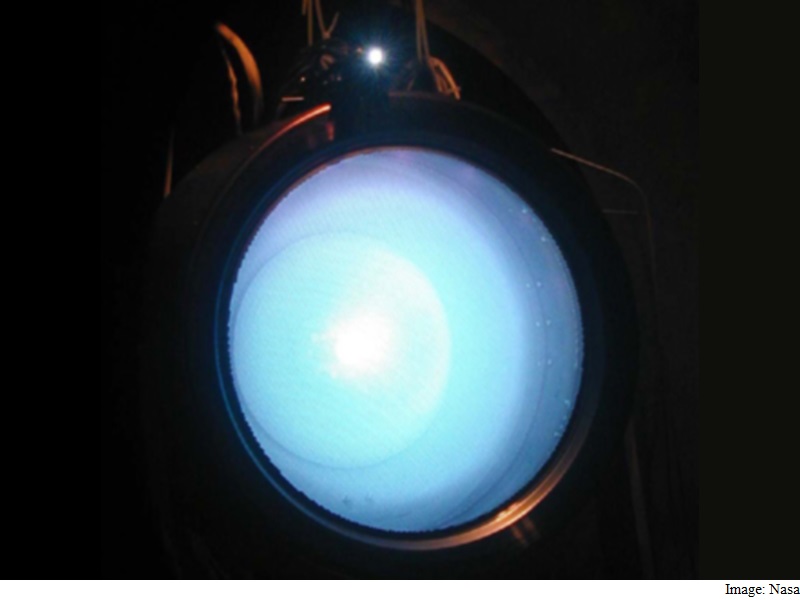- Home
- Science
- Science News
- New Ion Drive Could Power Round Trip to Mars on Single Tank of Fuel
New Ion Drive Could Power Round Trip to Mars on Single Tank of Fuel

Paddy Neumann, a Ph.D. student, explained that his ion thrusters work by hurling particles backwards so that a spacecraft can be propelled forwards, Daily Mail reported.
The ion drive works by bombarding the fuel source with electric arcs, which causes ions to be discarded. These ions then move through a magnetic nozzle, resulting in forward propulsion.
The innovative part of Neumann's drive is the type of fuel that was used.
While High Power Electric Propulsion (HiPEP) system runs on xenon gas, Neumann's ion drive can instead run on various metals, many of which can be found in space junk.
When it comes to acceleration, HiPEP may not be ideal to launch a spacecraft off a planet.
The current record holder for fuel efficiency of an ion drive is Nasa with its High Power Electric Propulsion (HiPEP) system, which allows 9,600 seconds of impulse.
This is a measure of thruster efficiency and is sometimes called 'bounce per ounce'. The new drive developed by Neumann has achieved up to 14,690, according to student newspaper Honi Soit.
Neumann said it could power a spacecraft to "Mars and back on one tank of fuel".
Neumann has applied for a patent and will be presenting his results on the 15th Australian Space Research Conference on September 30.
Catch the latest from the Consumer Electronics Show on Gadgets 360, at our CES 2026 hub.
Related Stories
- Samsung Galaxy Unpacked 2025
- ChatGPT
- Redmi Note 14 Pro+
- iPhone 16
- Apple Vision Pro
- Oneplus 12
- OnePlus Nord CE 3 Lite 5G
- iPhone 13
- Xiaomi 14 Pro
- Oppo Find N3
- Tecno Spark Go (2023)
- Realme V30
- Best Phones Under 25000
- Samsung Galaxy S24 Series
- Cryptocurrency
- iQoo 12
- Samsung Galaxy S24 Ultra
- Giottus
- Samsung Galaxy Z Flip 5
- Apple 'Scary Fast'
- Housefull 5
- GoPro Hero 12 Black Review
- Invincible Season 2
- JioGlass
- HD Ready TV
- Laptop Under 50000
- Smartwatch Under 10000
- Latest Mobile Phones
- Compare Phones
- Honor Win RT
- Honor Win
- Xiaomi 17 Ultra Leica Edition
- Xiaomi 17 Ultra
- Huawei Nova 15
- Huawei Nova 15 Pro
- Huawei Nova 15 Ultra
- OnePlus 15R
- Asus ProArt P16
- MacBook Pro 14-inch (M5, 2025)
- OPPO Pad Air 5
- Huawei MatePad 11.5 (2026)
- Xiaomi Watch 5
- Huawei Watch 10th Anniversary Edition
- Acerpure Nitro Z Series 100-inch QLED TV
- Samsung 43 Inch LED Ultra HD (4K) Smart TV (UA43UE81AFULXL)
- Asus ROG Ally
- Nintendo Switch Lite
- Haier 1.6 Ton 5 Star Inverter Split AC (HSU19G-MZAID5BN-INV)
- Haier 1.6 Ton 5 Star Inverter Split AC (HSU19G-MZAIM5BN-INV)

















